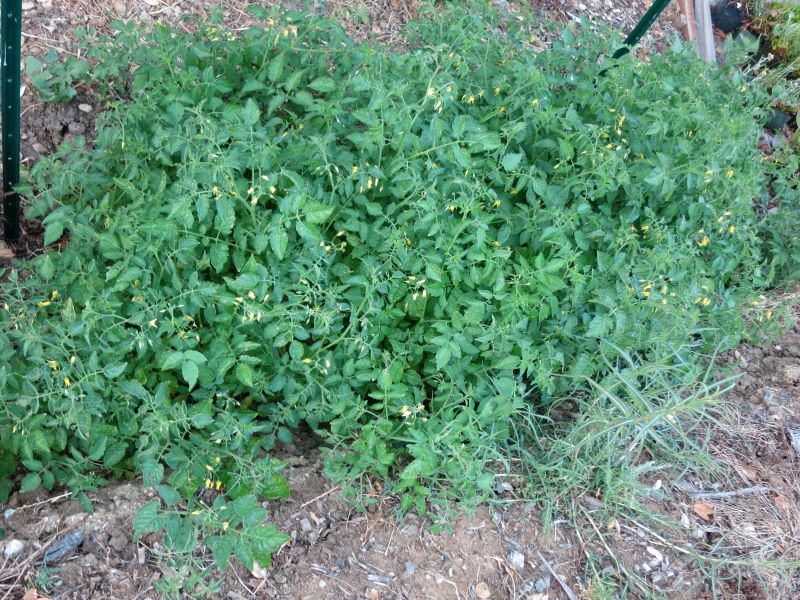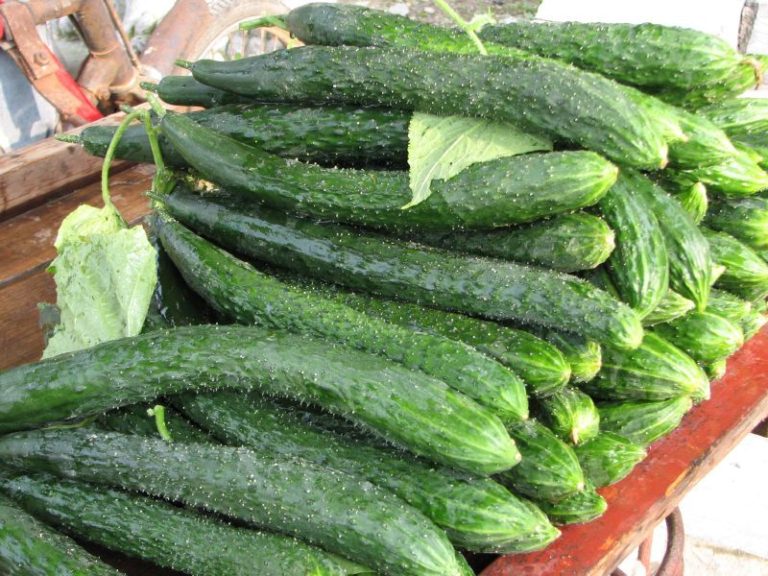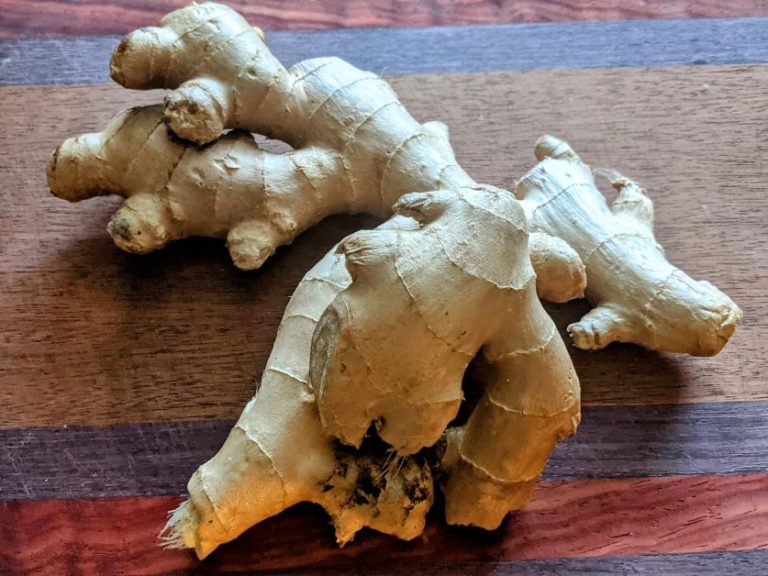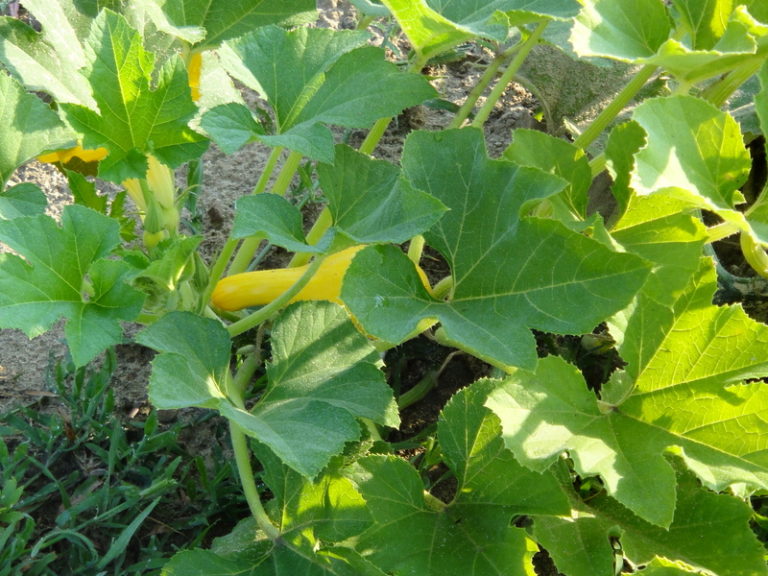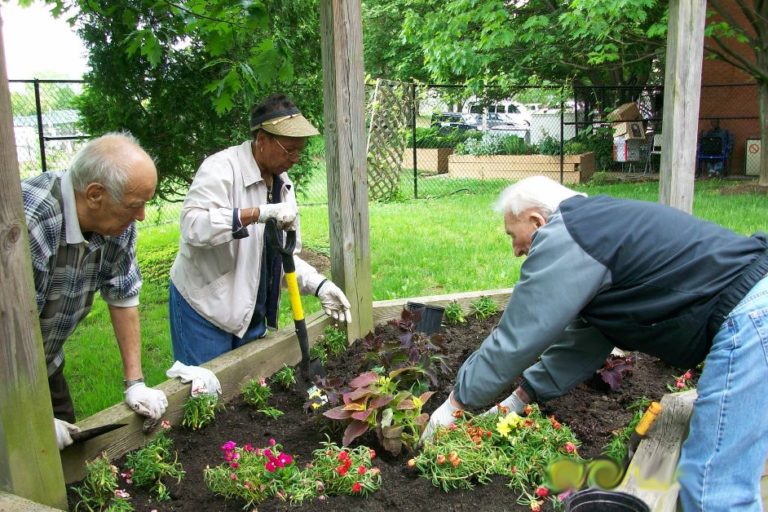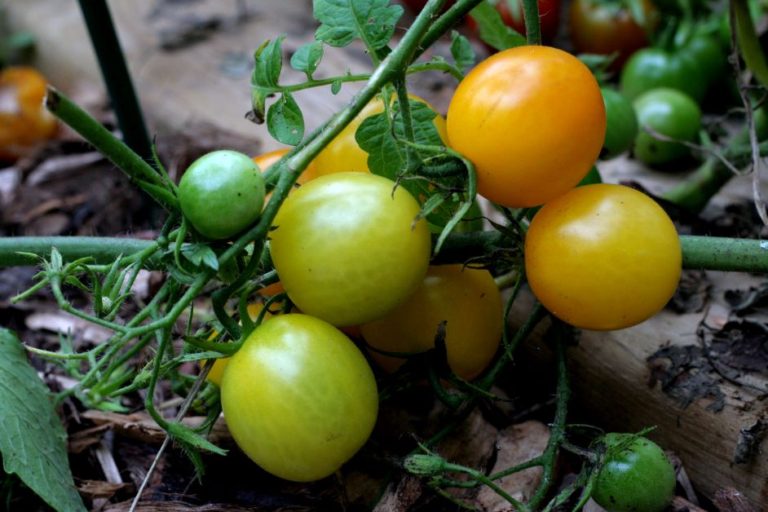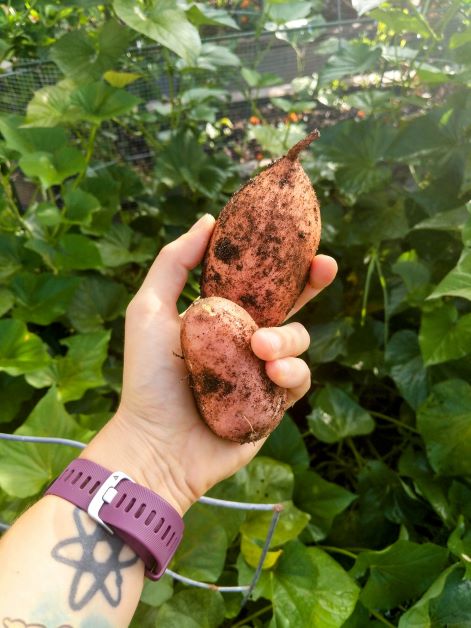How to Grow Everglades Tomatoes
Tiny, mighty and ultra-sweet! Thanks to its tolerance to heat, humidity and disease, the Everglades tomato is perfect for the Florida garden. These fruits are about half the size of a grape but with just one taste, store-bought tomatoes will forever seem like a ball of bland mush.
Learn how to grow Everglades tomatoes from a bonafide Florida gardener in this comprehensive guide.
[table id=36 /]
How to grow Everglades tomatoes from seed
Everglades tomatoes can thrive year-round in Florida. If given enough shade, it’s one of a handful of vegetables that grow in the Florida summer.
If you live in Florida, you may be able to find an Everglades tomato plant for sale near you. Because they’re so easy to grow, I recommend starting your own from seed. Everglades tomatoes are a great plant for beginner gardeners.
To start your seeds in pots:
- Fill 4-inch seed starter cups with high-quality potting mix.
- Plant 2-3 seeds per cup about ¼ of an inch deep into the soil.
- Water seeds and keep the soil moist but not soggy.
- Put tray in a warm, sunny location. You may need to protect them from the noonday sun.
- Seeds should germinate within 7 to 25 days. 10 days are about average, but it depends on climate.
- Move tray into full sun after seeds germinate. Continue to keep the soil moist but don’t overwater.
- When seedlings have 2 true leaves, thin as needed until you have 1 seedling per cup.
- Once seedlings are 5-7 inches tall, transplant them into the ground. Bury them at least 3 inches deep, or up to the first true leaves. This will keep your tomato plant sturdy.
- Water after transplanting, and keep soil moist but not soggy.
Pro tip! When thinning your seedlings, use one finger to gently press the soil at the base of the plant you want to keep. Using your other hand, pull up the seedlings you want to get rid of. The gentle pressure you put on the soil around the plant you’re saving will help keep it in place.
To direct sow:
- Bury a few seeds about ¼ inch into the soil, making sure to leave 2 feet between each spot. You can also squeeze an Everglades tomato, plant it directly into the ground, and it will sprout.
- Water the seeds or tomato in. Keep the soil moist but not soggy.
- Follow the steps above to thin your seedlings as they grow. By the time you’re done thinning, you should have 1 healthy plant per spot
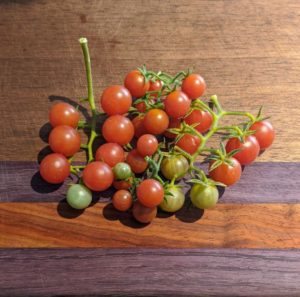
Everglades tomato growing conditions
Light
How much light you give your Everglades tomato depends on the time of year. If you’re growing Everglades tomatoes in the summer, plant them in part shade. If you’re growing them during the cooler parts of the year, plant them in full sun.
Temperature
While they do grow more vigorously during the spring and fall, the Everglades tomato can withstand high temperatures. With adequate shade, this tomato will grow through the Florida summer.
Everglades tomatoes grow year-round in zones 9B and below but need frost protection during winter.
Water
Everglades tomatoes need moderate water. If you’re growing during the Florida summer, our near-daily rains will be enough. Otherwise, water your Everglades tomato a few times a week. Stick your finger into the soil and if it’s dry up to your second knuckle, then it’s time to water.
Use a wand to water your plant at the base and not from overhead. Getting too much water on the leaves of your plant encourages fungal diseases.
Soil
Everglades tomatoes aren’t picky about their soil pH or soil type. Sandy, loamy and fertile is best.
Spacing
Due to its large size and tendency to ramble, give 2+ feet of space between each Everglades tomato plant — any closer and they become a target for pests and disease.
Fertilizing
Everglades tomatoes are a wild plant and don’t need as much fertilizer as a traditional variety.
Amend your soil with oak leaf compost about a week before transplanting. Once flowers start to form, feed again using a slow-release vegetable fertilizer.
Everglades tomato pruning and trellising
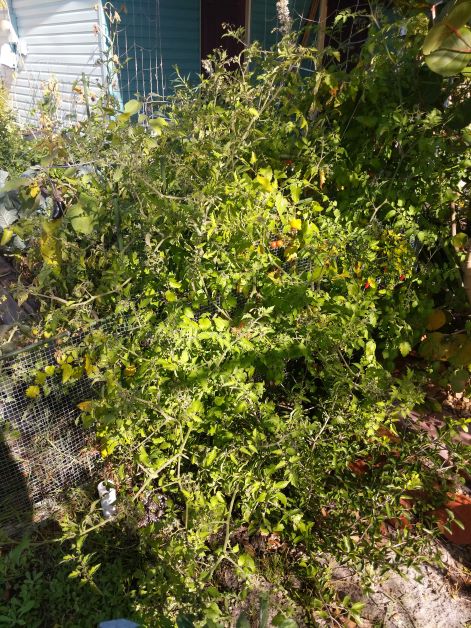
Whether you prune and/or trellis your Everglades tomato is up to you.
Everglades tomatoes can grow like weeds under the right conditions. When left alone, they grow big and bushy. Although it isn’t absolutely necessary, pruning will help improve airflow, reducing pests and disease. Using disinfected pruning shears, trim off excess foliage from the main stem of your plant.
If you want to trellis your Everglades tomato, a traditional tomato cage won’t be enough to contain it. Instead, support your plant by attaching it to a garden fence. You can also use twine to tie the top of the plant to a taller support, like a tree.
Are Everglades tomatoes invasive?
The Everglades tomato isn’t technically invasive, but it can be a nuisance.
One Everglades plant can grow hundreds of tomatoes and because the fruit is so small, it’s impossible to pick them all off the ground when they drop. The Everglades tomato is a robust self-seeder. Wherever you plant it, expect to find baby Everglades tomato plants underneath.
Some gardeners vow never to plant Everglades tomatoes directly in the garden because once you do, they’re hard to get rid of. Since they grow so easily and so big, they can take over a large section of your plot.
If you live in the subtropics, it’s common to find random Everglades tomatoes growing wild on your property after you plant them for the first time. Birds eat the little fruits and deposit them over your yard through their waste. I’ve even found Everglades tomatoes growing in the cracks of my sidewalk. They are tenacious.
Can you grow Everglades tomatoes in a container?
Yes! Everglades tomatoes do great in containers. In fact, growing them in a container can help cut down on their potential invasiveness.
The bigger your container, the bigger your plant. While I’ve grown Everglades tomato in a 1-gallon container, I’d suggest going for a 3-gallon or higher. You can also make a DIY grow bag for practically free.
To stop your Everglades tomato container from falling over, you’ll need to give your plant some support. Because Everglades tomato plants grown in a container are smaller than those in the ground, a regular tomato cage will work fine.
Everglades tomato troubleshooting
Generally, Everglades tomatoes are pest- and disease-tolerant. Although this variety will grow in the Florida summer, you may run into a few issues while growing them when the heat and humidity are at their highest.
Pests
Aphids and Ants
Aphids and ants are common problems in any Florida garden. It doesn’t help that the Everglades tomato is so big and bushy, giving aphids plenty of hiding spots to hang out and get busy. These soft-bodied buggers don’t do too much damage if you tackle them soon enough, but they multiply fast and their population can grow out of control in just a few days.
Aphids and ants have a symbiotic relationship. If you have aphids, you almost certainly also have ants. The easiest way to control aphids in the garden is to first get rid of ants. For more information, check out our guide to homemade aphid control.
Disease
Verticillium Wilt
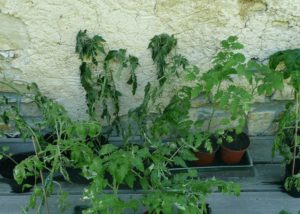
If your tomato plant wilts dramatically during the day and perks back up in the evening, you may have verticillium wilt. Other signs of this fungal disease include yellowing leaves, dropping leaves, and discolored stems. This disease usually starts in just one part of the plant but works its way through over time. Usually, this disease won’t kill your tomato plant but can cause smaller harvests.
Verticillium wilt spores live in the soil and enter your tomato plant through its stems and roots. The spores like it hot – one way to combat this disease is to keep the soil as cool as you can. Mulching your plants with pine straw can help. Improper watering and over-fertilization can also cause verticillium wilt.
Spores can survive in your soil for 7 years and can’t be controlled with fungicides. If you suspect that any of your tomato plants have contracted this disease, pull them up immediately to stop the disease from spreading.
Late Blight
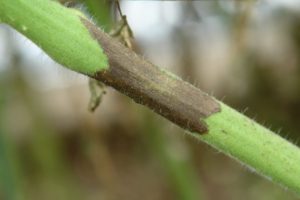
Late blight loves hot weather and high humidity, so this fungal disease can be a problem in Florida. Blight spores live in soil and can travel through the air on the wind, sometimes several miles at a time. This is the disease that was responsible for the Irish potato famine in the 1800s.
Signs of late blight include grey and brown patches on lower leaves. These patches spread and grow into giant lesions that are brown and crispy. Late blight moves quickly and can kill your plant in a day or two.
The only solution to late blight is prevention. Stop the soil from splashing up on your plants during watering, either by using a water wand or by installing a drip irrigation system.
Air circulation also helps. You can prune your plant to improve airflow and practice proper plant spacing. Proper spacing is especially important with Everglades tomatoes since they’re so big. You should also make sure your soil is well-draining and clean up debris on a regular basis.
How to harvest Everglades tomatoes
The Everglades tomato puts out TONS and TONS of fruit. The fruit also has a thin skin that’s easily damaged when picked. You always want to leave the stem on the fruit — pulling the tomato off its stem will rip the tomato’s skin. Once the skin is ripped, the tomato will turn mushy in just a few hours.
Rather than using your hands to pick Everglades tomatoes, use a pair of scissors and cut them off of the plant. To save time, cut bunches off instead of harvesting tomatoes one by one. Although you’ll harvest bunches that still have a few green fruits on them, this plant is such a heavy producer that you won’t mind.
If the skin is left intact, Everglades tomatoes will store for a few days on the counter before they turn soft. Unlike traditional tomatoes, they don’t lose much flavor when stored in the refrigerator. Everglades tomatoes can store in the refrigerator for up to a week.
Frequently asked questions
Are Everglades tomatoes native to Florida?
The Everglades tomato is the wild ancestor of the standard tomatoes we know today. Although you might guess that it’s a Florida native because of its name, Everglades tomatoes probably started off in South America and were carried to Florida by Native Americans.
How big do Everglades tomatoes get?
The Everglades tomato is a huge, bushy plant. Reaching 4 feet wide and 6+ feet tall, this species is much bigger than the traditional tomato.
What are the best tomatoes to grow in Florida?
If you don’t want to grow Everglades tomatoes, there are other heat-tolerant tomato hybrids that were specially created to withstand Florida’s extreme weather and humidity. Grow any of the varieties on this list and you’ll increase your chances of a big, disease-free tomato yield this season.
Are Everglades tomatoes a perennial?
Everglades tomatoes also often grow as a perennial in Florida and other tropical/subtropical climates. Old fallen tomatoes will germinate and grow when the conditions are just right.
Are Everglades Tomatoes Salt Tolerant?
Yes! Everglades tomatoes do fine with brackish water and salt winds. Feel free to plant Everglades tomatoes if you live on the coast.

